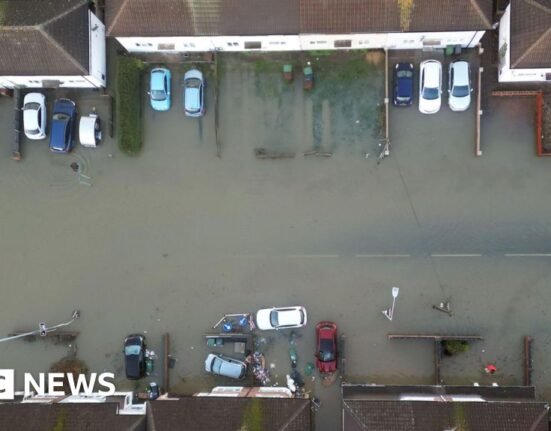Chevron continues to clean up toxic chemicals spewed into the air, soil and water after an oil and gas well in Weld County blew out in April due to equipment-installation failures, the company announced this week.
The company submitted its root-cause analysis to the Colorado Energy and Carbon Management Commission on Tuesday and then released a two-point explanation, saying an on-site contractor performed “improper assembly of the installation equipment for the production tree.”
A production tree is a mechanical structure placed on top of a wellhead after drilling and serves multiple purposes, including regulating the flow of oil, gas and water from the well, said Patricia Errico, a Chevron spokeswoman based in Colorado.
Chevron also blamed “inadequate setting of the barrier (tubing hanger assembly) designed to prevent the flow of liquids,” which is meant to serve as a pressure barrier to prevent uncontrolled flow of fluids, Errico said. Chevron did not blame the contractor for that work.
The commission’s investigation into the cause and whether or not enforcement action needs to be taken is ongoing, said Kristin Kemp, an ECMC spokeswoman. The state also continues to oversee Chevron’s environmental cleanup, which covers 1.5 miles surrounding the wellhead. A hearing on the blowout is scheduled for June 26.
“ECMC uses the root-cause analysis to further its investigation of the incident that will inform what enforcement action may be warranted and to determine what measures may need to be taken, if any, to minimize the likelihood of the incident occurring again,” Kemp said.
The company working at the Bishop well on behalf of Chevron was Houston-based Vault Pressure Control, Kemp said. Efforts on Wednesday to reach representatives of that company were unsuccessful.
The massive blowout occurred at 5:50 p.m. April 6 at the Bishop well south of Weld County Road 74, near Galeton, about 14 miles east of Greeley, while contractors were installing equipment to extract oil and gas from the ground after it had been fracked.
The blowout, which lasted five days, sent about 20,000 barrels of water and 5,000 barrels of hydrocarbons into the air, according to data about the incident. Those toxic chemicals caused high levels of benzene and other harmful chemicals to hang into the air, seep into the soil and flow into waterways.
Galeton Elementary School, which has about 142 students and staff, was closed for almost two weeks afterward.
Ten of the 14 families evacuated during the April blowout have returned to their homes as work crews continue to clean the spill from buildings and agriculture fields within a 1.5-mile radius of the well, according to the announcement posted on the company’s website.
The state has divided that area into 300 parcels that each have a specific remediation plan, Kemp said.
The remediation from the disaster is expected to extend into 2030, according to the Colorado Energy and Carbon Management Commission.
Chevron, which is responsible for the environmental cleanup, has been working to restore the area for two months and is continuing to sample the soil and groundwater and monitor the air for contaminants, Kim McHugh, Chevron’s vice president of its Rockies business unit, said in a video.
“The data continues to show no levels of health concerns,” McHugh said.
In the aftermath of the blowout, Chevron deployed dozens of workers to the site. Houses and barns were wrapped in plastic as workers in protective gear scooped up contaminated soil and power-washed other buildings, said Andrew Klooster, a Colorado field advocate for Earthworks.
“The discrepancy between Chevron’s categorization of what happened and the reality is different,” Klooster said in early May after visiting the area where the blowout occurred.
When the blowout happened, the Colorado Department of Public Health and Environment deployed a mobile air-monitoring van to the area and it detected high levels of benzene, methane and toluene in the air. Those samples were taken between April 9 and 21, according to data posted on the department’s website.
A team of Colorado State University atmospheric chemists also rode to the site in their air monitoring van and captured samples that showed dangerous levels of benzene in the air up to a mile away from the site during the blowout, said Emily Fischer, a professor in CSU’s atmospheric science department.
“The way you can think about this mixture is it’s really a soup,” she said. “There’s elevated not just benzene — a key pollutant — but also other things like toluene, ethylbenzene, xylene.”
That soup also spilled onto the ground, and the clearing of the contaminated soil and groundwater is a more long-term concern.
As of April 25, Chevron has disposed of 7,194 cubic yards of impacted soils and 89,013 barrels of recovered liquids, which contain hydrocarbons such as benzene and toluene, and metals such as arsenic and selenium.
“The Bishop incident has the unique complexities of multiple ‘media’ being impacted (soil, groundwater, surface water and personal property),” the ECMC’s webpage on the blowout says.
Get more Colorado news by signing up for our Mile High Roundup email newsletter.







